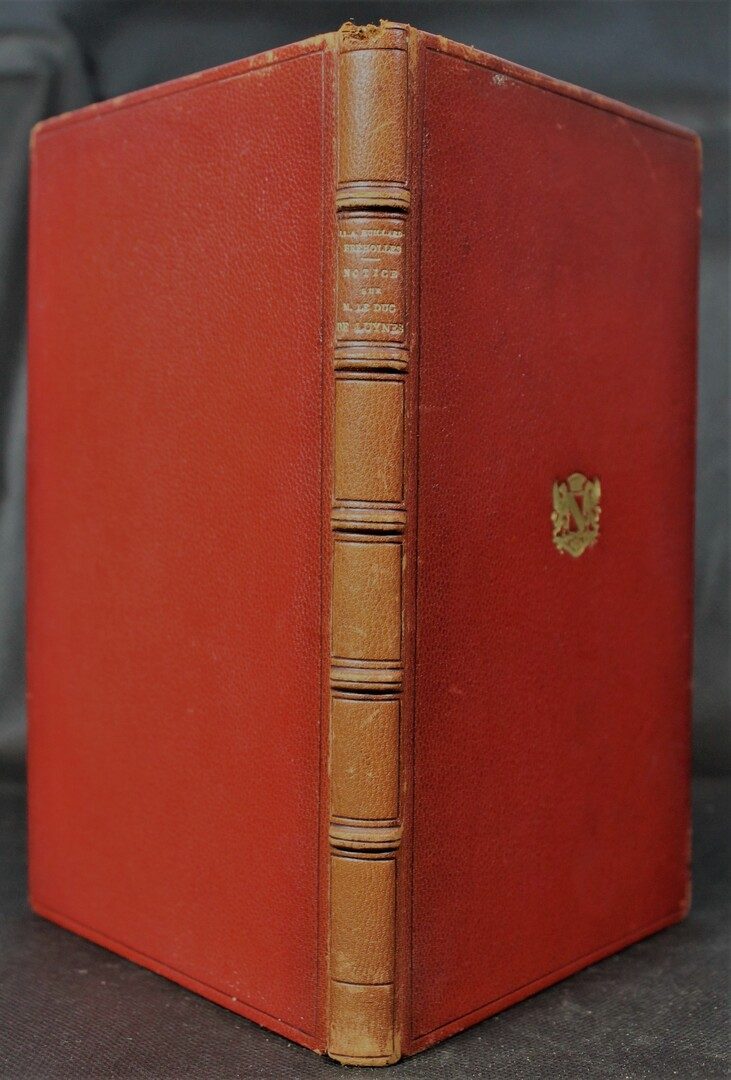Notice sur M. le Duc de Luynes, membre de l’Institut, representant du peuple aux Assemblées constituante et legislative, de 1848 a 1851.
Huillard-Breholles, Jean Louis A.
Synopsis
Extremely rare.This work is a detailed biography of a leading French scholar and politician written one year before his death. The name of Theodoric Honoré-Joseph-Paul-Albert, Duke of Luynes (1802-1867) today evokes the memory of the man who was perhaps the greatest patron of archaeology, scholarship and the arts in the 19th century France.
His trip to Egypt in 1840 marked the beginning of a growing interest in the East. The Duke of Luynes was very much interested in the origins of art and Greek civilization. He learned Hebrew and Arabic and studied epigraphic issues with significant results. However, his primary interest remained numismatics, and the results were published in his Essay on Numismatics, Satrapies and Phoenicia under the Achaemenid kings (1846), Cypriot Coins and Inscriptions (1852). He also made a significant contribution to Phoenician studies with his research on the sarcophagus and the funerary inscription of Esmunazar king of Sidon (1856), in which he presented a synthesis of all the knowledge that there already was on Phoenician dynasties.
The interest of the Duke of Luynes for Oriental Studies found its culmination in the missions he organized to explore the Dead Sea region in 1864 and 1866. He embarked with the first mission, at the age of sixty-two accompanied by Louis Lartet, from the Natural History Museum, Combe, a doctor, and Louis Vignes, both a marine and photographic officer also joined the team. The journey resulted in a monumental work entitled Voyage d’Exploration À Mer Morte, À Petra Et Sur La Rive Gauche Du Jourdain. Oeuvre Posthume Publie Par Ses Petits-Fils Sous La Direction de M. Le Comte De Vogue. Paris [1874].








